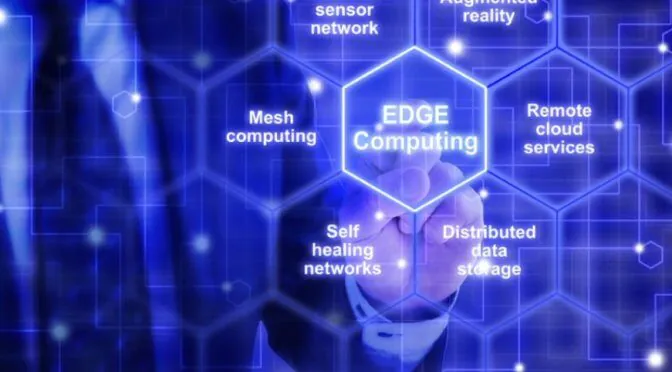Edge computing is gaining immense popularity in today’s world of digitization. Edge computing allows continuative services and operations without the negative impact from intermittent cloud connections, therefore is being widely adopted by various of industries, such as manufacturing, telecom, healthcare and finance service sectors. With the growing demand for business operation efficiencies and cost reduction among businesses of all sizes, the adoption of edge computing technologies is expected to witness a significant growth over the next five years.
What is Edge Computing?
Edge computing is a network architecture in which the data generated by Internet of Things (IoT) devices are processed at the edge of the network. The data stored is close to its source, so it can reduce latency and improve server response. Initially, edge computing is often implemented by SMEs. However, at present, large-scale enterprises are also deploying it owing to the increasing need for efficient and secure data. The rising data generation with greater data response requirements across the world has increased the demand for technologically advanced edge computing solutions.
Global Edge Computing Market Overview
According the latest market research report from Technavio, the global edge computing market size is projected to grow by USD 5.74 billion from 2019 to 2023, with market growth expected to accelerate at a 41% CAGR during the forecast period. The rising demand for decentralized computing and reducing latency in decision making are some of the key factors expected to facilitate the market’s growth in the forthcoming years.
In terms of regional market share, the Americas currently accounts for the largest share in the global edge computing market. However, in terms of CAGR, the Asia Pacific region will demonstrate the fastest growth rate through 2023. This is mainly attributed to the high adoption of cloud technologies, industrial IoT, and growing investment in high-speed telecommunication networks such as 5G in countries like China, India, and Japan.
5G Spurring Higher Demand for Edge Computing
The recent advent of fifth generation telecommunication network technology (5G) is expected to further stimulate the development of edge computing around the world. 5G enables low-latency, high-bandwidth communication between the device and the network, which will have higher requirement for the mobile connectivity with loT devices.
Data generation will significantly increase in 5G telecommunication, this will lead to the stronger demand for more technologically advanced edge computing platforms. Several governments, telecom operators, communication hardware vendors, and smartphone and loT device manufacturers are already investing and developing up-to-date telecommunication infrastructures with edge computing capabilities.
Moreover, the emergence of 5G networks is expected to be followed by the larger stream of data from several hundred to thousands of loT devices and sensors, which will lead to higher demand for edge computing solutions for processing the massive volumes of data.
In addition to the development of 5G telecommunication networks, the deployment of industrial ICT infrastructure, the ongoing efforts to develop edge computing standards, and the rising demand for decentralized computing to reduce latency in decision making and optimizing network traffic for sustainable energy usage are also expected to boost the demand for edge computing solutions over the near future.
Check Technavio’s Global Edge Computing Market Report 2019-2023
Check Technavio’s Global Edge Computing Market Report 2019-2023 for more information about the global edge computing market. This market research report provides the latest market size and market development for major market segments in terms of product types and regional market landscape. The report contains detailed market trends, market drivers, market challenges and key opportunities. In-depth market analysis such as Porter’s five force model, and comprehensive competitive landscape including detailed profiles of top companies are also included in the report.



